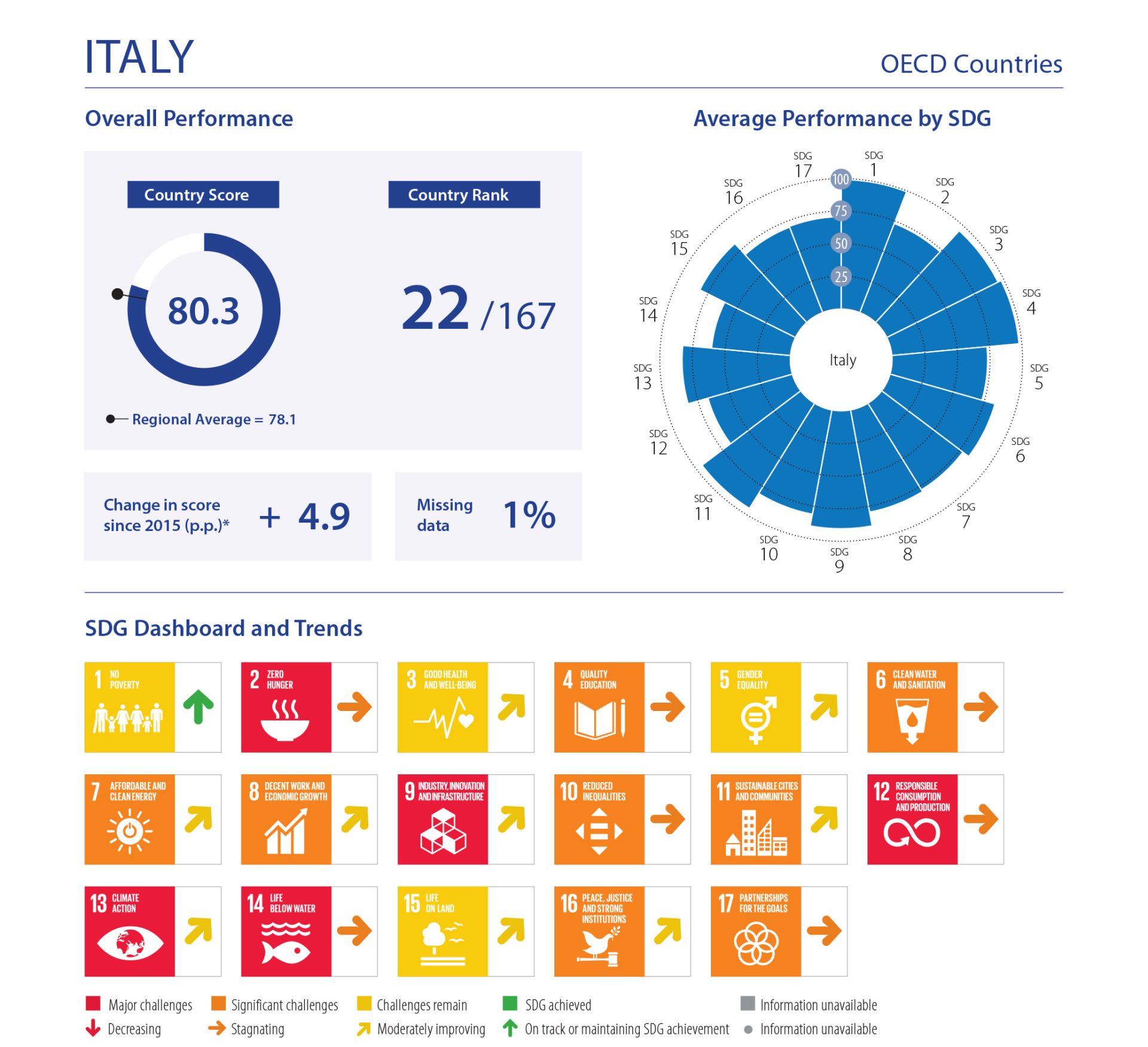The new finance and that change of pace for sustainable development

To date, commitment to the Sustainable Development Goals – SDGs is high at a global level: 190 of the 193 United Nations member states have submitted their national plans and priorities for sustainable development.
European countries continue to lead the SDG index (in terms of overall performance, Finland, Sweden and Denmark remain at the top) while countries in East and South Asia are outpacing other regions in their progress towards the Sustainable Development Goals (countries that have shown faster progress than others include Benin, Costa Rica, Nepal, Peru, Saudi Arabia, the United Arab Emirates and Uzbekistan).
However, globally, ten years after their adoption, only 16.7% of the global targets are on track to be achieved by 2030.
While significant progress has been made in basic services such as access to electricity and reducing child mortality, “based on the rate of progress since they were adopted by the international community in 2015, none of the 17 SDGs will be achieved by 2030.”
Particularly behind are goals 2, 11, 14, 15 and 16 respectively Zero hunger, Sustainable cities, Life below water, Life on land, Peace justice and strong institutions. Five goals are instead improving: use of mobile phones (9), access to electricity (7), use of the Internet (9), infant mortality (3) and neonatal mortality (3).
These are some of the findings that emerged in the tenth edition of the Sustainable Development Report – Sdr . The study, entitled Financing sustainable development to 2030 and the mid-century , analyses the progress of the 17 sustainable development goals – SDGs and the 169 specific targets, assessing the progress made with respect to the United Nations 2030 Agenda. providing an overview of the progress made at global, regional and national levels.

The report was published by the United Nations Sustainable Development Solutions Network – SDSN , a global network of experts and institutions committed to promoting sustainable development.
Global Financial Architecture Needed to Reform to Increase Capital Flows to Emerging and Developing Countries
Sustainable Development Report 2025
The analysis highlights above all the need to put urgent reforms on the table. Starting with the one concerning the Global Financial Architecture , that is, the set of rules, institutions, agreements and practices that govern international financial flows and global financial markets, which should be adopted during the conference on Financing for Development - Ff4d scheduled between June and July in Spain and which should unlock the financing necessary to achieve the SDGs.
Financing Global Public Goods. According to the report, the GFA “needs urgent reform to finance global public goods and achieve sustainable development. Approximately half of the world’s population,” it points out, “lives in countries that cannot adequately invest in sustainable development due to unsustainable public debt and limited access to affordable, long-term capital.”
The UN member states meeting in Seville, it says, “have an enormous responsibility, not only towards their own citizens but towards all humanity”.

Sustainable development is a high-return investment, yet the GFA continues to direct capital to high-income countries rather than developing countries – EMDEs , which offer stronger growth prospects and higher returns. “The upcoming FF4D presents a crucial opportunity for UN Member States to reform this system and ensure that international finance flows at scale to EMDEs to achieve sustainable development.
Currently, the study says, 250 million children are out of school, while 733 million people suffer from chronic hunger. “Investing in children’s health and education in low-income countries offers significant economic returns. Investments in human capital can generate a compound annual return of 20%.”
New technologies, such as artificial intelligence and innovations in the energy sector, can also significantly contribute to sustainable development. It is essential to ensure that these technologies are accessible to all.
“Against a backdrop of rising geopolitical tensions, rising global inequalities and a deepening climate crisis,” said Jeffrey D. Sachs , SDSN President and lead author of the report, “this year’s Sustainable Development Report highlights the overwhelming majority of the world’s recognition of the Sustainable Development Goals as the fundamental path to achieving peace, equity and well-being.”
Many countries, he acknowledges, "are making significant progress, but much more can be achieved by stepping up investments in education, green technologies and digital solutions."
Read the latest updates from the ProdurreBene channel
Opening photo by Ratul Pal for Unsplash . In text image from SDSN's Sustainable Development Report .
You read this article freely, without being blocked after the first few lines. Did you like it? Did you find it interesting and useful? VITA's online articles are largely accessible for free. We want it to be this way forever, because information is everyone's right. And we can do it thanks to the support of those who subscribe.
Vita.it





